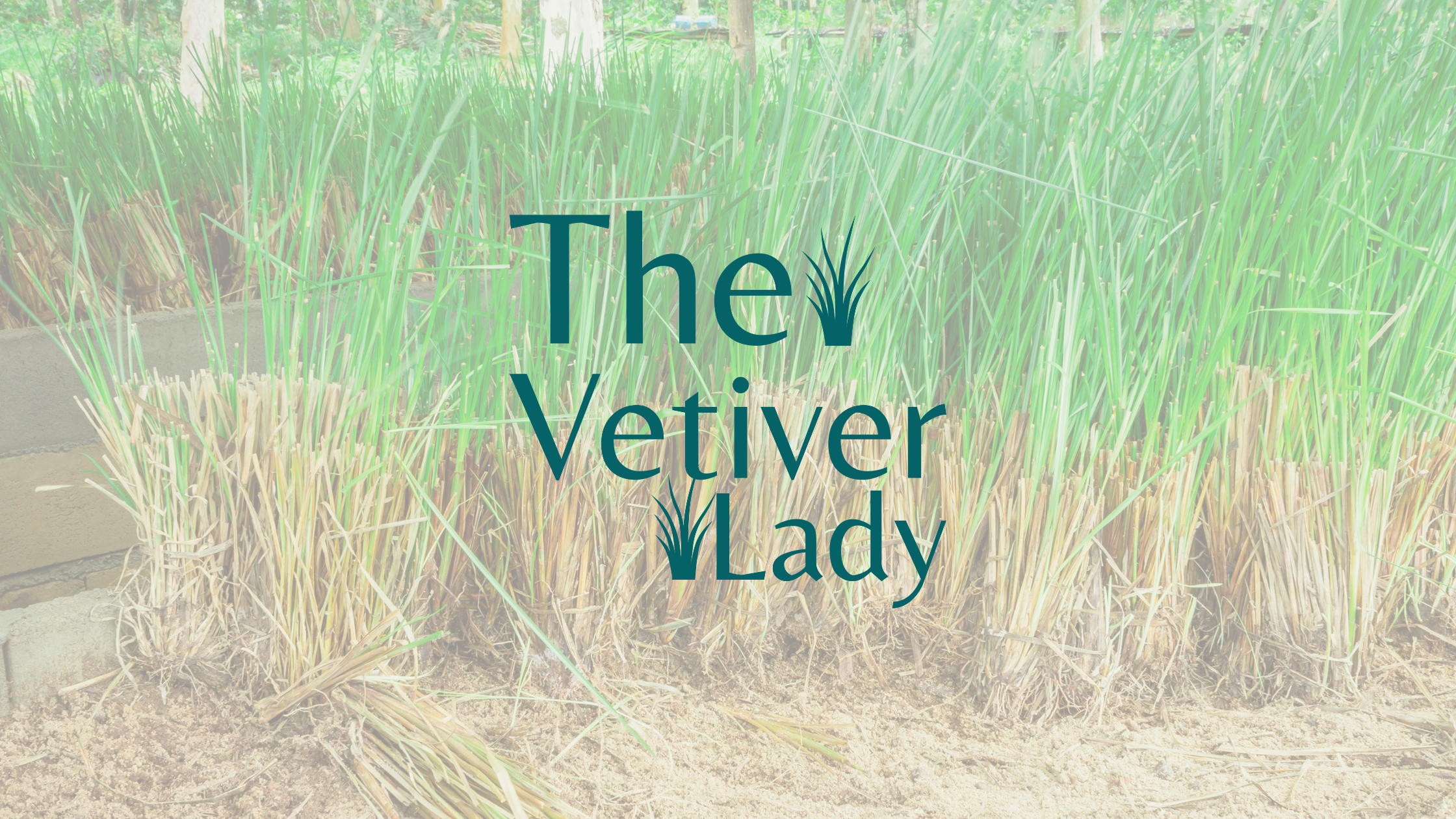
As a master gardener in Phoenix, Arizona, I’m always on the lookout for plants that can thrive in our harsh desert environment while providing multiple benefits. One such plant that has become a cornerstone of my landscaping projects is Vetiver grass (Chrysopogon zizanioides). While Vetiver is often celebrated for its erosion control and soil stabilization properties, its potential in desert landscaping goes far beyond these well-known uses. In this blog post, I’ll explore Vetiver’s unique adaptations to arid climates, its role in xeriscaping, and how you can use it to create stunning, sustainable desert landscapes.
Why Vetiver Grass Thrives in the Desert
Vetiver grass is native to India, where it grows in a range of climates, from tropical to arid regions. This adaptability makes it uniquely suited to the challenges of desert gardening. Here’s why Vetiver is a perfect fit for Phoenix and similar areas:
- Deep Root System: Vetiver’s roots can grow up to 10-12 feet deep, allowing it to access water far below the surface. This makes it incredibly drought-tolerant once established.
- Heat Tolerance: Vetiver can withstand extreme temperatures, making it ideal for Phoenix’s scorching summers.
- Low Water Requirements: After the initial establishment period, Vetiver requires minimal irrigation, aligning perfectly with xeriscaping principles.
- Soil Versatility: Vetiver can grow in poor, rocky, or sandy soils, which are common in desert landscapes.
Beyond Erosion Control: Vetiver in Residential Landscaping
While Vetiver is often used for large-scale erosion control, it has incredible potential in residential landscapes. Here are some creative ways to incorporate Vetiver into your desert garden:
1. Living Borders and Edging
Vetiver’s tall, slender blades and dense growth habit make it an excellent choice for creating living borders. Plant it along pathways, driveways, or property lines to define spaces and add a touch of greenery. Its deep roots won’t compete with nearby plants, making it a great neighbor in your garden.
2. Privacy Screens
In a desert landscape, finding plants that can provide privacy without requiring excessive water can be a challenge. Vetiver’s dense growth and height (up to 5-6 feet) make it an excellent natural screen. Plant it in rows to create a living fence that blocks wind, dust, and prying eyes.
3. Accent Planting
Vetiver’s graceful, arching blades add texture and movement to the landscape. Use it as a backdrop for flowering desert plants like Penstemon, Desert Marigold, or Red Yucca. Its neutral green color complements the vibrant hues of desert blooms, creating a visually striking contrast.
4. Slope Stabilization in Small Gardens
If your property has a slope or embankment, Vetiver can prevent soil erosion while adding beauty. Its deep roots stabilize the soil, and its lush growth softens the harsh lines of the slope. Pair it with other slope-stabilizing plants like Trailing Indigo Bush or Creeping Dalea for a layered effect.
Vetiver in Xeriscaping: A Water-Wise Wonder
Xeriscaping is a cornerstone of sustainable gardening in the desert, and Vetiver grass fits seamlessly into this approach. Here’s how Vetiver enhances water-wise landscapes:
- Reduces Water Runoff: Vetiver’s deep roots improve soil structure, allowing water to infiltrate rather than run off. This is especially valuable during monsoon season, when heavy rains can lead to water waste and erosion.
- Minimizes Irrigation Needs: Once established, Vetiver requires little to no supplemental watering, making it a low-maintenance addition to your garden.
- Complements Other Xeriscape Plants: Vetiver pairs beautifully with other drought-tolerant plants like Agave, Aloe, and Texas Ranger. Its vertical growth habit contrasts nicely with the rosette shapes of succulents and the sprawling forms of groundcovers.
Companion Planting with Vetiver
One of the most exciting aspects of Vetiver grass is its ability to enhance the growth and health of other plants. Here are some companion planting ideas for desert gardens:
- Nitrogen-Fixing Plants: Pair Vetiver with nitrogen-fixing plants like Mesquite or Palo Verde trees. These plants enrich the soil, creating a more fertile environment for Vetiver and other nearby plants.
- Pollinator-Friendly Plants: Vetiver’s dense growth provides shelter for beneficial insects. Plant it alongside pollinator favorites like Bee Balm, Salvia, or Globe Mallow to create a haven for bees and butterflies.
- Groundcovers: Combine Vetiver with low-growing groundcovers like Dymondia or Ice Plant to create a layered, textured look. The groundcovers help retain soil moisture, while Vetiver’s deep roots prevent erosion.
Vetiver and Desert Biodiversity
In the desert, biodiversity is key to creating resilient ecosystems. Vetiver grass plays a surprising role in supporting local wildlife:
- Habitat for Beneficial Insects: Vetiver’s dense foliage provides shelter for insects like ladybugs and lacewings, which help control pests in the garden.
- Soil Microbe Support: Vetiver’s roots create a hospitable environment for soil microbes, which are essential for nutrient cycling and soil health.
- Erosion Control Protects Habitats: By preventing soil erosion, Vetiver helps preserve the habitats of native plants and animals, contributing to the overall health of the ecosystem.
Tips for Growing Vetiver in the Desert
If you’re ready to add Vetiver grass to your landscape, here are some tips to ensure success:
- Planting Time: The best time to plant Vetiver in Phoenix is during the cooler months (fall or early spring) to give it time to establish before the summer heat.
- Spacing: Space plants about 6-12 inches apart for a dense hedge or border. For individual accent plants, space them 2-3 feet apart.
- Watering: Water regularly during the first few months to help the roots establish. Once established, Vetiver requires minimal irrigation.
- Pruning: Trim Vetiver back to about 12 inches in late winter to encourage fresh growth and maintain its shape.
- Soil Preparation: While Vetiver can grow in poor soils, amending the planting area with compost can help it establish more quickly.
The Future of Vetiver in Desert Landscaping
As water scarcity becomes an increasingly pressing issue, plants like Vetiver grass will play a vital role in sustainable landscaping. Its ability to thrive in harsh conditions, improve soil health, and enhance biodiversity makes it a true desert gardening hero. Whether you’re a homeowner looking to create a water-wise oasis or a landscaper tackling erosion control, Vetiver grass is a versatile and invaluable addition to your toolkit.
So, the next time you’re planning a desert landscape, consider Vetiver grass. It’s not just a plant—it’s a solution. Happy gardening! 🌵
This blog post provides a fresh perspective on Vetiver grass, focusing on its applications in desert landscaping and xeriscaping, which are not extensively covered on thevetiverlady.com. It also emphasizes companion planting, biodiversity, and residential uses, offering practical tips for gardeners in Phoenix and similar regions.
